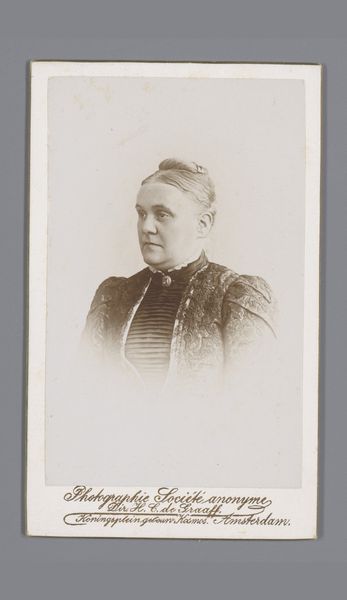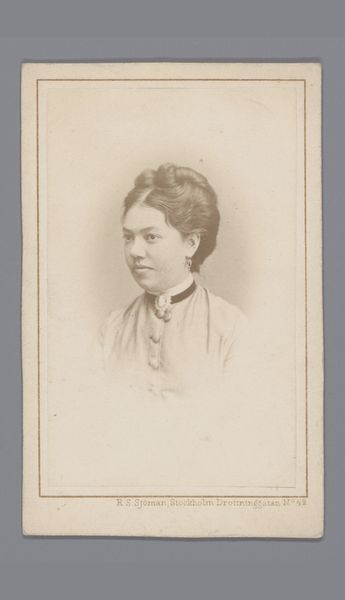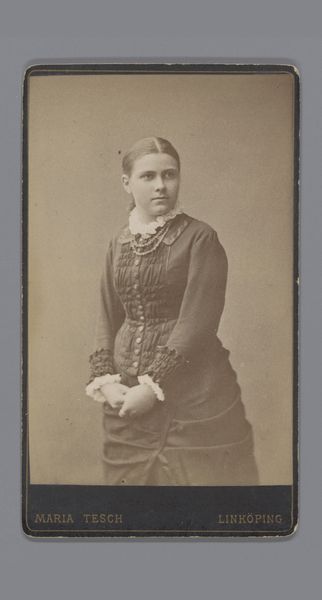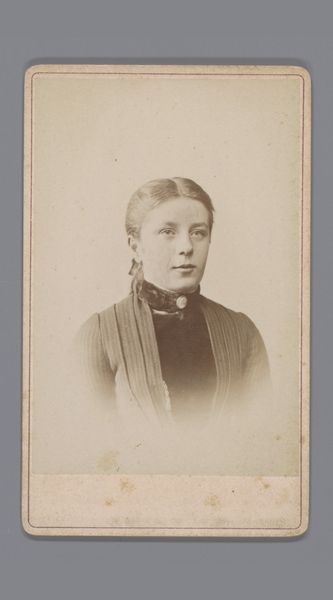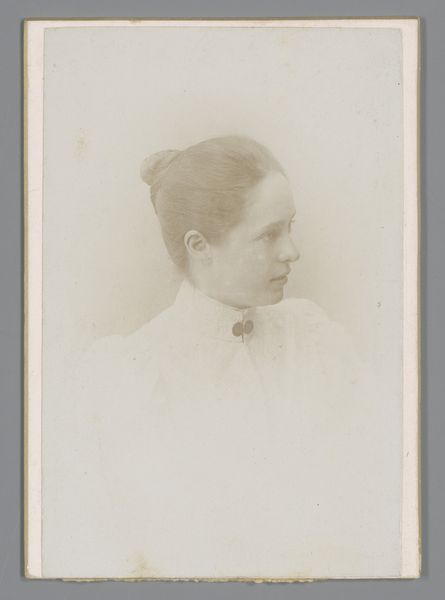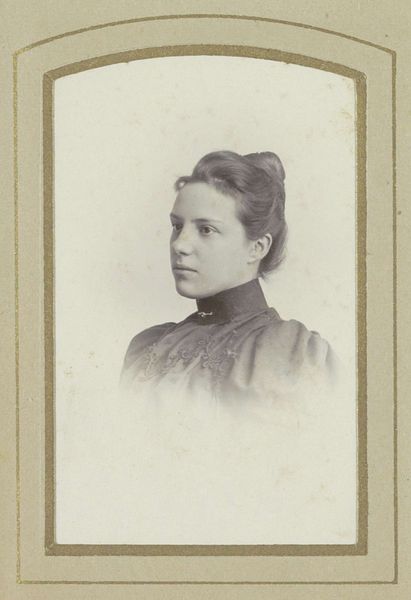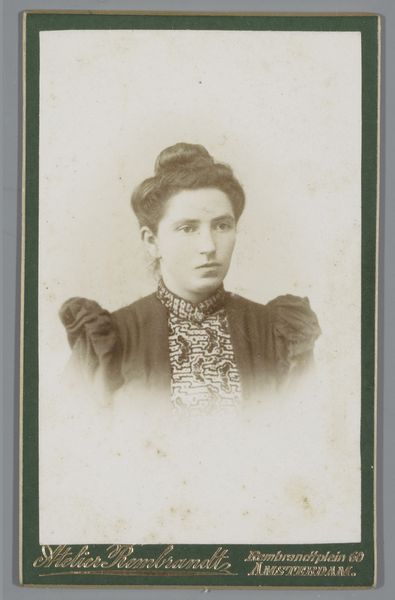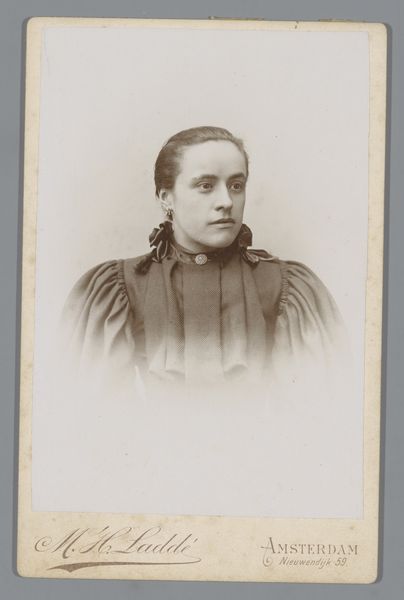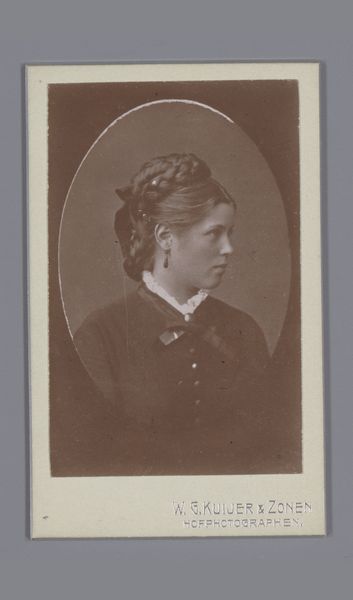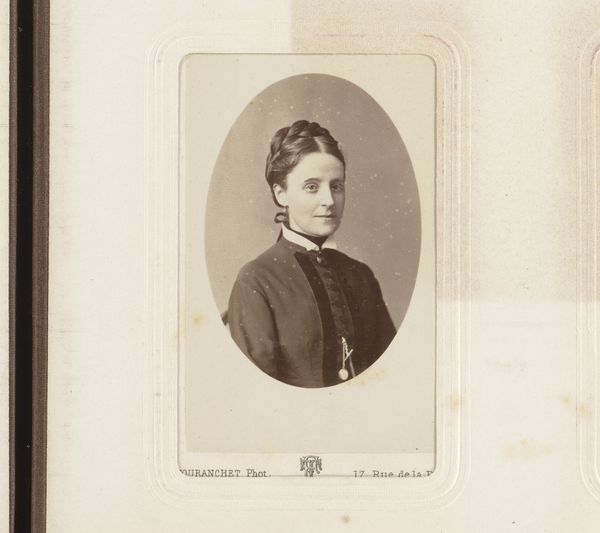
print, photography
#
portrait
# print
#
photography
Dimensions: height 103 mm, width 64 mm
Copyright: Rijks Museum: Open Domain
Editor: This is "Portrait of Anna Gesiena Jonker," made sometime between 1880 and 1920, attributed to Johannes Leonardus van der Heijden. It's a sepia-toned photographic print, and I’m struck by the sitter's modest presentation. What's your read on this work? Curator: Seeing this, I’m drawn to consider photography's role in democratizing portraiture. Before this, portraiture was largely the domain of the wealthy who could afford to commission paintings. The emergence of photography, particularly in formats like carte-de-visite prints, allowed a wider segment of society to participate in visual representation. Do you notice how the subject is styled? Editor: Yes, her clothes, though proper, look… well, manufactured? Like ready-to-wear items. Not bespoke or fancy. It reinforces the idea of broader access to representation. Curator: Precisely. Consider the economic impact of this shift. Textile factories mass-producing clothing, photography studios popping up in urban centers – it's a whole new economy based on image production and distribution. And think about the labor involved in printing these photographs, often under harsh conditions using toxic chemicals. The aesthetic is one layer, the production of that aesthetic another. Editor: That is fascinating, I had not thought about how those new systems of labor democratized art. Is there any evidence, beyond this portrait, that the studio targeted the emerging middle class? Curator: Well, the carte-de-visite format itself, designed for mass production and exchange, points to a market beyond the elite. Plus, looking closer at the photographer's stamp – the location in Amsterdam. We could research how much this portrait would cost relative to an average worker’s wage during that period. These small details embedded within the materiality of the artwork can speak volumes. Editor: I hadn't considered the production aspect so directly. This definitely expands my perspective on these portraits beyond just being about who's depicted. Curator: Indeed. Shifting the focus to production helps uncover the complex interplay of economy, technology, and representation in art.
Comments
No comments
Be the first to comment and join the conversation on the ultimate creative platform.
